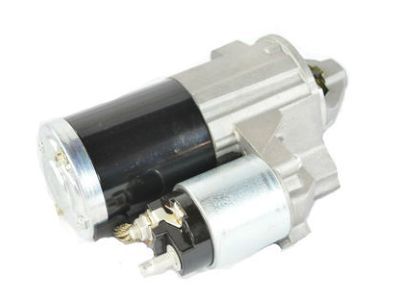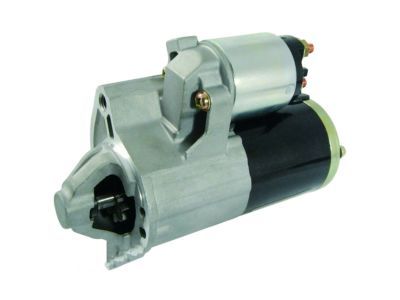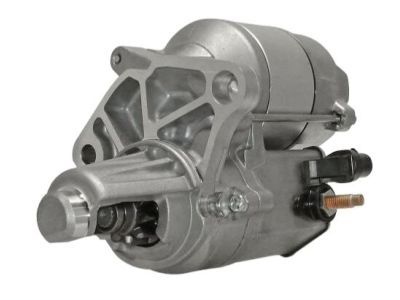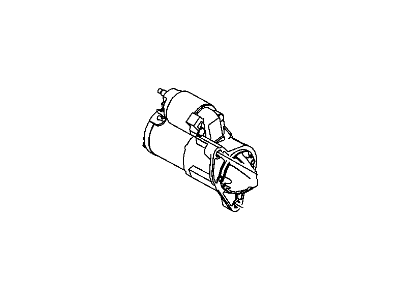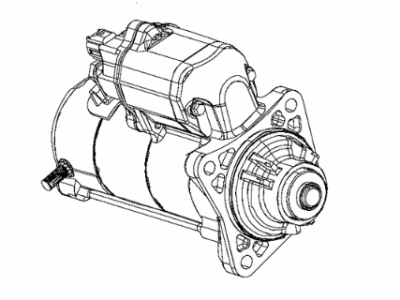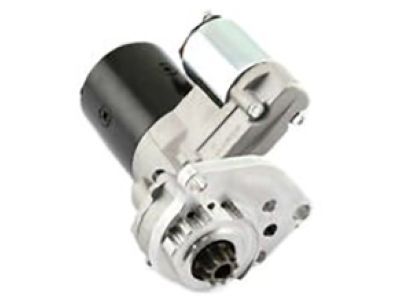×
- Live Chat
- 1-888-511-3595

My Garage
My Account
Cart
Genuine Dodge Ram 2500 Starter Motor
Starter Ignition- Select Vehicle by Model
- Select Vehicle by VIN
Select Vehicle by Model
orMake
Model
Year
Select Vehicle by VIN
For the most accurate results, select vehicle by your VIN (Vehicle Identification Number).
27 Starter motors found
Dodge Ram 2500 Starter Motor Reman
Part Number: R5037199AB$182.06 MSRP: $270.00You Save: $87.94 (33%)
| Page 1 of 2 |Next >
1-20 of 27 Results
Dodge Ram 2500 Starter Motor
The Starter Motor Motor in Dodge Ram 2500 is a very vital component which is needed to turn the electrical energy stored in the battery into mechanical energy to start the cars engine. It consists of an externally fixed solenoid which is connected to the battery with the help of a switch and the starter motor. In the starter, either field coils or permanent magnets are provided which rotate an armature and create the required torque. The starter drive couples with the engine flywheel each time the ignition is switched on and an over running clutch releases it when the engine is running. In the past and up to the present, the Dodge Ram 2500 models have employed different types of starters, but the most widely used are the electric starters. One of the improvements is the gear reduction starters whereby a reduction gear is used to engage the drive. OE starters work for normal engines, but for high compression engines the increased load demands may call for additional special starters to avoid frequent failure.
Looking for affordable and high-quality auto parts? Then you have already arrived at the proper online shop. We offer all Dodge Ram 2500 Starter Motor at great affordable prices. Moreover, all genuine Dodge Ram 2500 Starter Motor come with a manufacturer's warranty. In the long run, you would realize you have saved a lot of trouble and money with OEM parts from here.
Dodge Ram 2500 Starter Motor Parts Questions & Experts Answers
- Q: How to check a Starter Motor and Starting Circuit on Dodge Ram 2500?A: Start by checking the Battery Cables and connections, testing the battery's condition, and examining the starter motor wiring. Check the related fuses and inspect the ignition switch circuit. Verify the operation of the clutch pedal position switch or the TR sensor. If the starter does not activate, check for battery voltage at the starter solenoid. If voltage is present, remove and bench test the starter motor assembly. If the pinion drive extends but does not rotate, the solenoid is operational but the starter motor is defective. If the solenoid plunger extends and rotates the pinion drive, the starter assembly is functioning correctly.
- Q: How to Disconnect the Starter Motor on Dodge Ram 2500?A: To disconnect the starter motor, begin by disconnecting the cable(s) from the negative battery terminal(s). Then, raise the vehicle and support it securely on jackstands. On certain models with 4WD and specific transmissions, there may be a support bracket blocking access to the lower starter mounting bolt. If present, remove the support bracket bolts and pry it aside. Remove the heat shield, if equipped, from the starter motor. Next, remove the nut securing the Battery Cable to the terminal stud on the starter solenoid and disconnect the cable from the terminal stud. Disconnect the electrical connector from the spade terminal on the solenoid. On models with a manual transmission, remove the starter mounting bolt and nut. On models with an automatic transmission, remove the two starter mounting bolts. Move the starter motor towards the front of the vehicle until the nose of the starter pinion housing clears the transmission bellhousing. Tilt the nose down and lower the starter to access the wiring connectors more easily. Finally, disconnect the battery cable and electrical connector from the terminals on the starter motor solenoid and remove the starter. For HEMI engines, follow a similar process, but also remove the two starter motor mounting bolts. For diesel engines, disconnect the wiring harness and battery cable from the starter, remove the three starter mounting bolts, and then remove the starter. Installation is the reverse of removal for all engine types.
Related Dodge Ram 2500 Parts
Browse by Year
2010 Starter Motor 2009 Starter Motor 2008 Starter Motor 2007 Starter Motor 2006 Starter Motor 2005 Starter Motor 2004 Starter Motor 2003 Starter Motor 2002 Starter Motor 2001 Starter Motor 2000 Starter Motor 1999 Starter Motor 1998 Starter Motor 1997 Starter Motor 1996 Starter Motor 1995 Starter Motor 1994 Starter Motor
